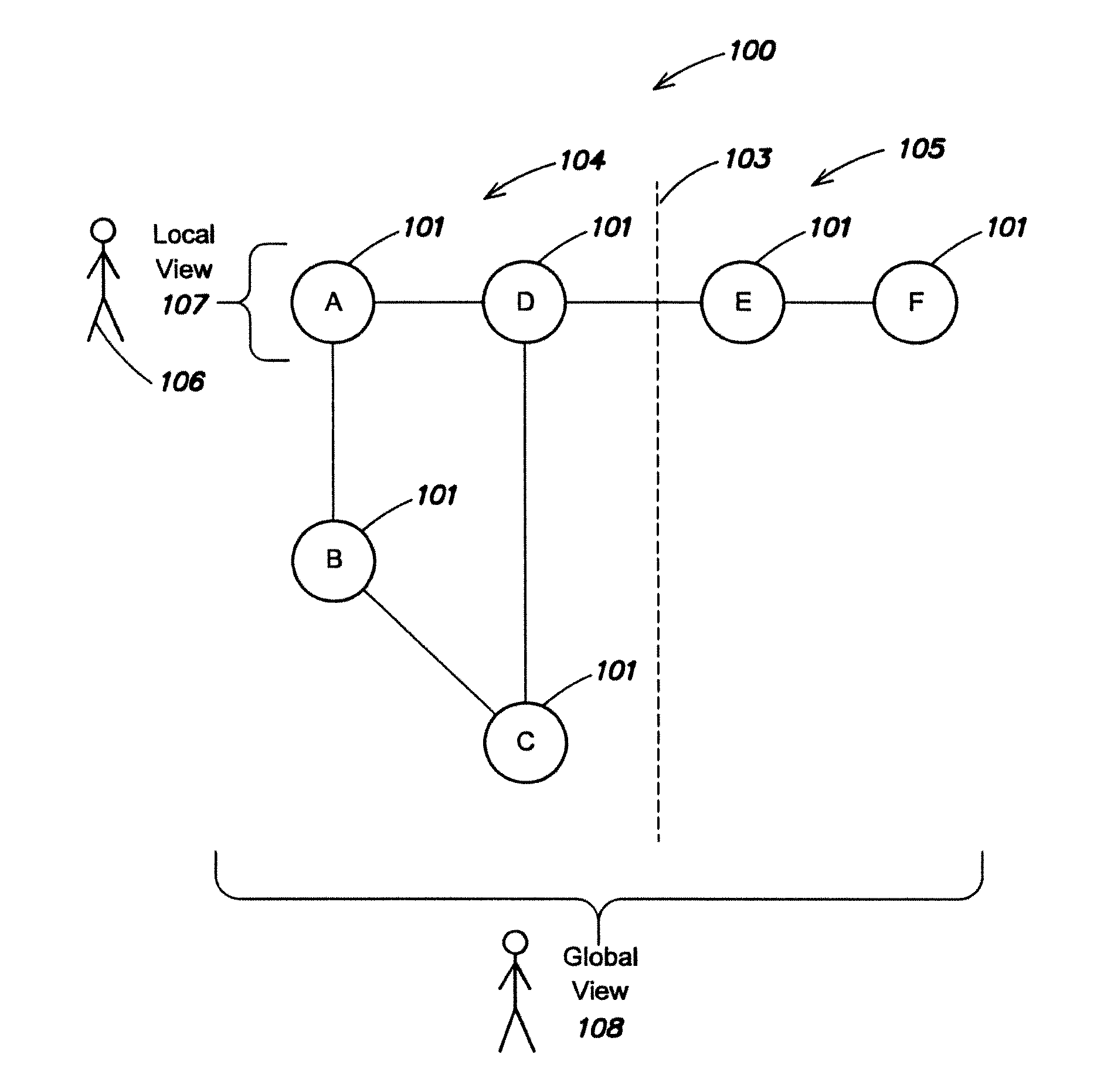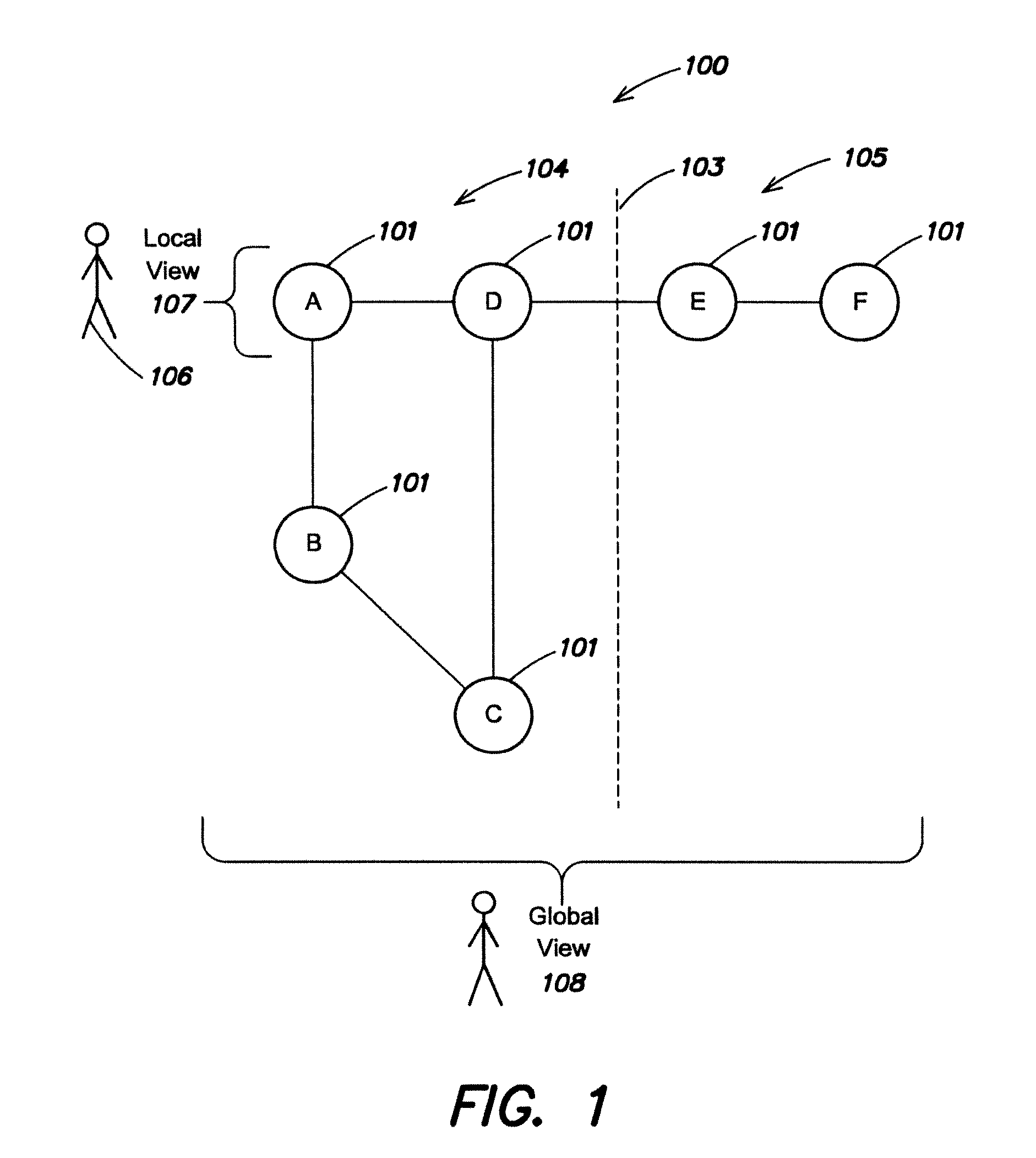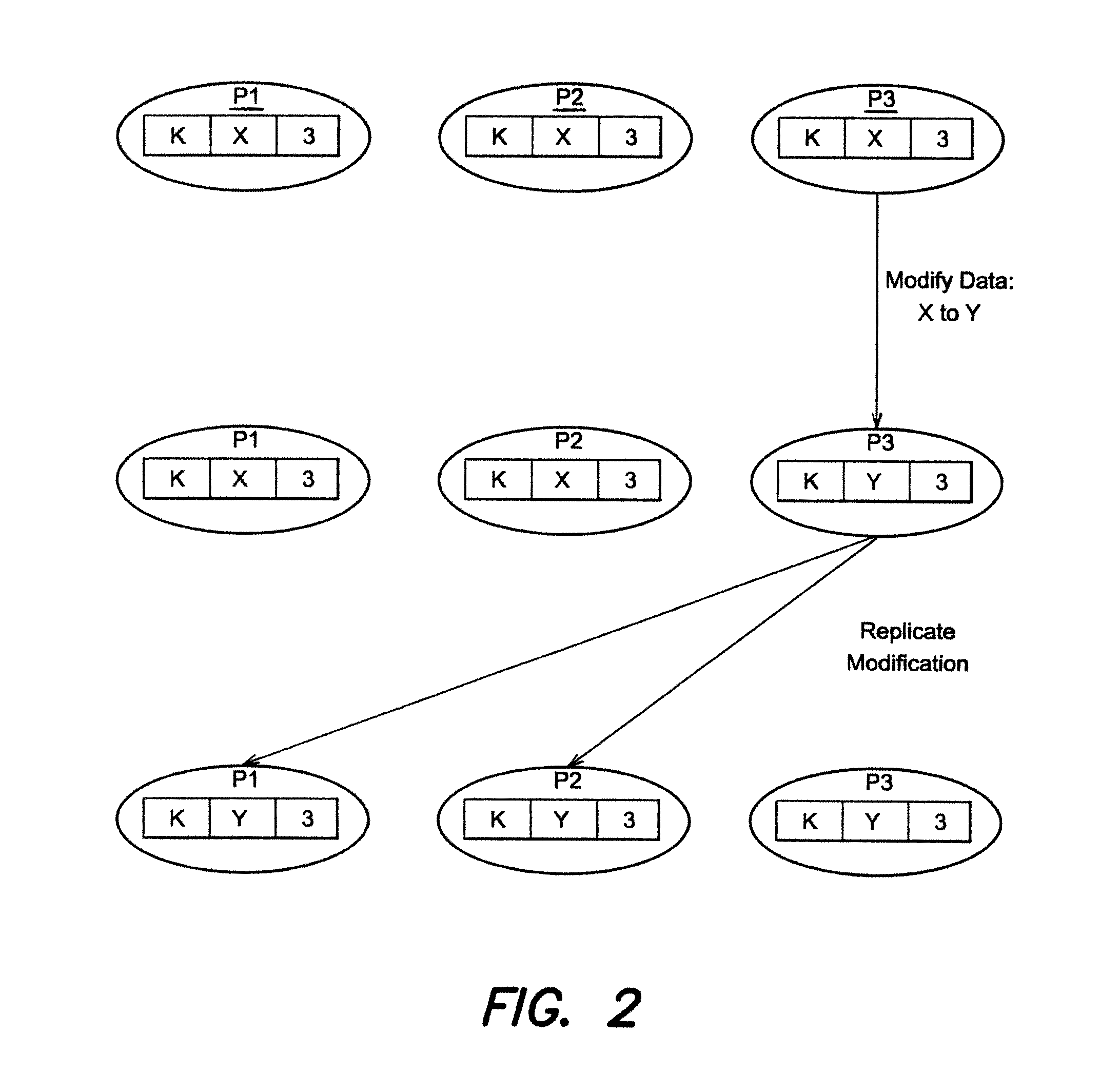Method and apparatus for distributed configuration management
a configuration management and distributed technology, applied in the field of computer data structures, can solve problems such as time-consuming and/or significant overhead, conflict may occur, and distributed locking protocols may require considerable overhead
- Summary
- Abstract
- Description
- Claims
- Application Information
AI Technical Summary
Benefits of technology
Problems solved by technology
Method used
Image
Examples
Embodiment Construction
[0061]FIG. 1 is a schematic diagram of a plurality of peer nodes 101 (labeled A, B, C, D, E, F) in a network 100 for illustrating one embodiment of the invention. Each peer node has a globally unique identifier (GUID) so that each peer node can identify which node it is communicating with via messages transmitted on the network. The peer nodes are arranged in a configuration in which only some of the nodes are directly connected to other nodes. Node A is directly connected to nodes B and D; node D is directly connected nodes A, C and E; node B is directly connected to nodes A and C; node C is directly connected to nodes B and D; node E is directly connected to nodes D and F; and node F is directly connected to node E. In this example the network may be partitioned (at some point in time) as indicated by the dashed line 103, wherein nodes A-D are located on one network partition 104 (left hand side of the partition) and nodes E-F on another network partition 105 (right hand side of t...
PUM
 Login to View More
Login to View More Abstract
Description
Claims
Application Information
 Login to View More
Login to View More - R&D
- Intellectual Property
- Life Sciences
- Materials
- Tech Scout
- Unparalleled Data Quality
- Higher Quality Content
- 60% Fewer Hallucinations
Browse by: Latest US Patents, China's latest patents, Technical Efficacy Thesaurus, Application Domain, Technology Topic, Popular Technical Reports.
© 2025 PatSnap. All rights reserved.Legal|Privacy policy|Modern Slavery Act Transparency Statement|Sitemap|About US| Contact US: help@patsnap.com



